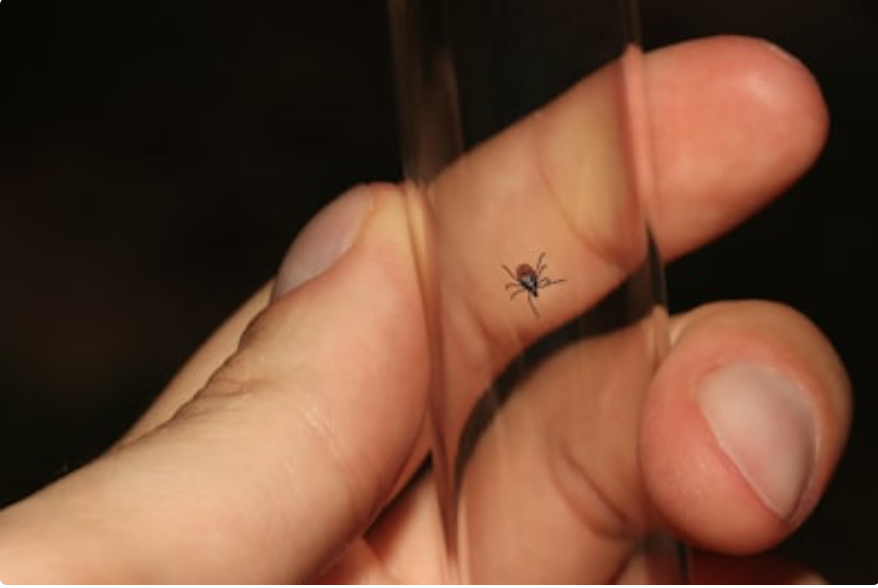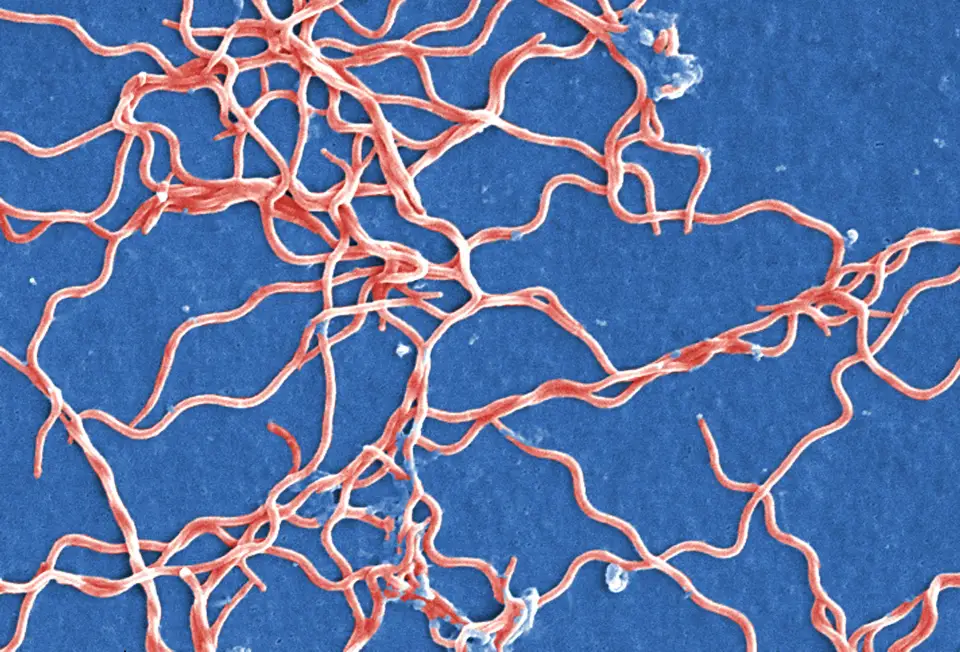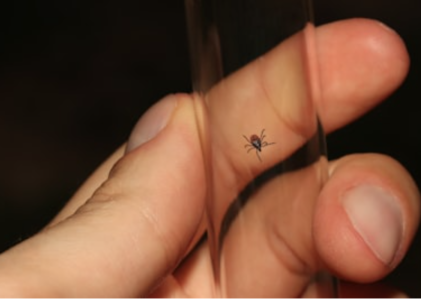Understanding Lyme Disease: Symptoms & Treatment

Key Highlights
- Lyme disease is a bacterial infection transmitted through the bite of infected blacklegged ticks.
- Early symptoms include fever, headache, fatigue, and a characteristic “bull’s-eye” rash called erythema migrans.
- If left untreated, Lyme disease can spread to the joints, heart, and nervous system, leading to serious complications.
- Early diagnosis and treatment with antibiotics are crucial for preventing long-term health problems.
- Preventive measures such as wearing protective clothing, using insect repellent, and checking for ticks after outdoor activities can reduce the risk of infection.
Introduction

Lyme disease is becoming a bigger problem in the United States and other places. It is a bacterial infection that people get from the bite of infected blacklegged ticks. This infection can affect many parts of the body, like the skin, joints, heart, and nervous system, if it is not diagnosed and treated quickly. It is important to know the causes, symptoms, and ways to prevent Lyme disease to keep you and your loved ones safe.
What is Lyme Disease?
Lyme disease is an illness that can affect many parts of the body. It is caused by a germ called Borrelia burgdorferi. People usually get it when they are bitten by infected blacklegged ticks, also known as deer ticks. These ticks are very small and hard to see. Their bites usually do not hurt.
The first signs of Lyme disease show up a few days to weeks after a tick bite. One common sign is a rash that looks like a “bull’s-eye.” This rash is called erythema migrans (EM) and typically appears at the site of the tick bite. You might also feel sick, with symptoms such as fever, headache, tiredness, and muscle pain.
Overview of Lyme Disease

Lyme disease is a type of infection caused by the Borrelia burgdorferi bacterium. You can get this bacterium mainly from the bite of an infected tick, especially the blacklegged tick, which is also known as the deer tick. The disease got its name from Lyme, Connecticut, where it was first seen in a group of cases in 1975.
The Centers for Disease Control and Prevention (CDC) says that Lyme disease is the most common insect-borne illness in North America. While we don’t know the exact number, it’s thought that tens of thousands of people are diagnosed with Lyme disease each year in the United States.
Lyme disease is especially common in some parts of North America, mainly in the northeastern and upper Midwest states. However, cases have been found all over the continental United States, with a higher prevalence in the northeastern United States. To manage Lyme disease effectively, early diagnosis and quick treatment with the right antibiotics are very important. This helps to prevent serious long-term problems.
Causes and Transmission
Lyme disease happens when people get infected with Borrelia bacteria. This most often comes from Borrelia burgdorferi, which can be spread to humans through a bite from blacklegged ticks. These ticks are found in wooded areas, tall grasses, and leaf litter, particularly during the late spring, summer, and early fall months. They wait there to attach to people and animals who pass by.
The Borrelia bacteria are mostly passed when an infected tick stays on a person’s skin for a long time, usually between 24 to 48 hours. While the tick feeds, the bacteria move from the tick’s gut to its salivary glands and then into the host through saliva.
It’s important to know that not every blacklegged tick has Borrelia bacteria, and not every tick bite will lead to Lyme disease. Still, it’s essential to take steps to protect yourself when in areas where these ticks are common.
Recognizing the Symptoms of Lyme Disease

Recognizing the symptoms of Lyme disease is very important for getting a quick diagnosis and treatment. The first signs of Lyme disease can look a lot like those of other common illnesses. So, it’s important to know the possible signs.
One noticeable symptom is erythema migrans (EM). This is a unique rash that shows up where the tick bite happened. But, not everyone who gets Lyme disease will have this rash. Other early symptoms can include fever, headache, tiredness, aches in muscles and joints, and swollen lymph nodes.
During the early stages of Lyme disease, people may feel several symptoms. These symptoms usually show up within 3 to 30 days after a tick bite. One key sign of early Lyme disease is erythema migrans. This is a unique skin rash seen in about 70-80% of infected people. The rash often starts as a red circle and slowly spreads out, resembling a bull’s-eye.
Besides erythema migrans, the early symptoms of Lyme disease can feel like the flu. They may include fever, chills, headaches, tiredness, muscle and joint pain, and swollen lymph nodes. Some people may even experience a stiff neck. These early symptoms can be mild and are often confused with other illnesses. This may cause delays in diagnosis and treatment.
If you notice any of these early symptoms, it’s important to see a healthcare professional. This is especially true if you’ve been in a place known for Lyme disease or had a recent tick bite. Getting an early diagnosis and treatment with the right antibiotics can greatly lower your chances of serious complications from Lyme disease.
Progressed Stage Symptoms
If not treated, Lyme disease can spread to other parts of the body. This can lead to serious symptoms that affect several organs, like the nervous system, heart, and joints. After weeks or months from a tick bite, some people may have problems, such as facial paralysis (called Bell’s palsy), meningitis (swelling around the brain and spinal cord), and encephalitis (swelling of the brain). These are signs of progressed stage symptoms of untreated Lyme disease.
Lyme arthritis is another common sign of advanced Lyme disease. It causes pain and swelling in larger joints, like the knees, known as large joints. It can also affect the heart, although this is less common. This condition is known as Lyme carditis. It can disturb the heart’s electrical system, leading to an irregular heartbeat, dizziness, and breathing issues.
This progression of Lyme disease shows why early diagnosis is so important. Getting medical help quickly can stop these serious problems from developing. If not treated in time, these issues can have long-lasting effects on a person’s health and well-being.
The Importance of Early Detection
Early detection of Lyme disease is very important. It helps reduce the chance of long-term problems and ensures effective treatment. If Lyme disease is diagnosed and treated quickly, usually within a few weeks of getting infected, people often recover faster and better.
When Lyme disease is found and treated early, taking oral antibiotics for a short time usually clears the infection. This also helps avoid other problems. However, if the diagnosis and treatment are delayed, the bacteria can spread in the body, leading to more serious symptoms that may need longer and more complicated treatment plans. It is important to note that there is currently no agreement on the best treatment for post-treatment Lyme disease syndrome, as the underlying cause is not yet clear. It is crucial to be wary of alternative diagnostic tests and treatments found on the internet, as they may not be supported by scientific evidence. Understanding the importance of early detection and seeking evidence-based treatment is key in managing Lyme disease.
Role of Early Detection in Treatment Success
Early diagnosis is very important for treating Lyme disease successfully. When it’s found early, Lyme disease usually responds well to antibiotic treatment. This is most effective when given soon after diagnosis. If caught early, people are more likely to recover fully and have a lower chance of long-term health issues.
Antibiotic treatment works best at getting rid of the bacteria that cause Lyme disease in the early stages. Common antibiotics for early Lyme disease include doxycycline, amoxicillin, or cefuroxime axetil. These medicines are usually taken by mouth for 10 to 21 days, depending on the stage of infection. The length of treatment also depends on how severe the infection is and how well the person responds to the medication. Early detection and treatment are crucial for successful recovery from Lyme disease.
Early diagnosis helps doctors start antibiotic treatment before the bacteria can spread throughout the body. This can help prevent greater damage. Quick action is key to stopping Lyme disease from becoming worse. If it progresses, it may cause more serious symptoms and need longer, more complicated treatment.
Common Misdiagnoses
Lyme disease has many different symptoms, and these can be quite subtle. This can lead to it being confused with other health issues, especially in the beginning stages. Conditions like rheumatoid arthritis, fibromyalgia, chronic fatigue syndrome, and even mental health problems can show similar signs. This makes it difficult to diagnose Lyme disease.
Rheumatoid arthritis causes joint pain and swelling, which can be mistaken for Lyme arthritis, especially when joint symptoms are clear. Chronic fatigue syndrome causes long-lasting tiredness, which can look a lot like the fatigue from Lyme disease. These similar symptoms make it harder to identify Lyme disease based just on what a patient shows.
The wide variety of symptoms with Lyme disease, combined with the limited effectiveness of lab tests in the early days, can make misdiagnosis more likely. To get the right diagnosis and treatment, doctors need to look closely at the person’s health history, recent tick bites, symptoms, and lab results.
Diagnostic Approaches
Diagnosing Lyme disease involves several steps. First, doctors look closely at the patient’s medical history. Then, a physical exam is performed. They also do some lab tests. It is very important to ask about possible tick bites and any recent outdoor activities in areas known for Lyme disease.
Lab tests, like blood tests, help to confirm the diagnosis. However, they might not be clear, especially early on. The most common method to test for Lyme disease is called the two-tiered serological testing. This means they start with a basic test. If that is positive, they do a second confirmatory test.
Laboratory Tests and Their Interpretations
Laboratory tests play a crucial role in diagnosing Lyme disease, particularly in cases where the characteristic erythema migrans rash is absent or atypical. The standard diagnostic approach for Lyme borreliosis, as recommended by the Centers for Disease Control and Prevention (CDC), involves a two-tiered testing process using blood tests.
The first test, known as the enzyme-linked immunosorbent assay (ELISA) or immunofluorescence assay (IFA), detects antibodies produced by the body in response to Lyme disease infection. If the ELISA or IFA test is positive or indeterminate (equivocal), a second test, called the Western blot, is performed to confirm the diagnosis.
| Test | Description | |
| ELISA or IFA | Detects antibodies to Borrelia burgdorferi | |
| Western Blot | Confirms the presence of specific antibodies to Borrelia burgdorferi |
It’s important to note that these tests typically take several weeks after infection for antibodies to develop to detectable levels. Therefore, a negative result from a blood test taken shortly after a tick bite does not necessarily rule out Lyme disease.
Imaging Techniques in Diagnosis
Laboratory tests, like blood tests, are the main way to diagnose Lyme disease. However, imaging techniques can also be helpful in certain cases. This is especially true if doctors think there might be problems with the nervous system or heart. Depending on the situation, doctors may use imaging tests such as magnetic resonance imaging (MRI), electrocardiogram (ECG), and echocardiogram. These tests help to check how severe the disease is and can help doctors make treatment decisions.
MRI is a test that uses magnets and radio waves to take clear pictures of the body’s internal parts. It is especially helpful for looking at possible nerve issues from Lyme disease. For example, getting an MRI of the brain or spinal cord can show if there is inflammation or problems related to Lyme neuroborreliosis, which includes issues like meningitis or encephalitis.
An ECG is a test that checks the heart’s electrical activity. It is crucial for diagnosing Lyme carditis, which is a rare but serious complication of Lyme disease. This test is quick and safe. It can help doctors spot any problems with the heart’s rhythm or conduction that could come from inflammation of the heart tissues due to Lyme disease.
Treatment Options
Treatment for Lyme disease usually includes antibiotics. The kind of antibiotic and how long you take it depends on how severe and what stage the infection is at. It’s very important to find and treat it early to avoid long-term problems and to help you heal faster.
Along with antibiotics, other care like getting enough rest, drinking fluids, and taking pain relievers can help ease your symptoms and make you feel better while you recover. It’s important to follow the treatment plan and listen to your doctor. This way, the treatment will work effectively, and you can lower the risk of having symptoms that last a long time.
Antibiotic Treatment Strategies
Antibiotic treatment is the main way to manage Lyme disease. The type of antibiotics and how long to take them depend on how advanced and serious the infection is. Early Lyme disease usually does well with a 10 to 21-day course of oral antibiotics. Common choices are doxycycline, amoxicillin, or cefuroxime axetil.
However, more advanced cases of Lyme disease, especially those that have spread or have not improved after initial treatment, may need intravenous (IV) antibiotics. This method gives the medicine directly into the bloodstream through a vein. It helps the antibiotics reach the affected areas more effectively.
The exact antibiotics, dose, and treatment length are chosen based on each person. Factors include the person’s age, overall health, how severe and long the symptoms last, and any allergies to medications. It’s very important for a healthcare professional to closely watch the person during and after the antibiotic treatment. This ensures that the treatment is working well, helps manage any side effects, and confirms the infection is fully gone.
Managing Symptoms and Complications
Managing symptoms and preventing serious complications are important parts of Lyme disease care. Antibiotic treatment can get rid of the bacteria that cause the infection. However, some people may still have symptoms after the treatment ends. This condition is called Post-Treatment Lyme Disease Syndrome (PTLDS).
To handle these symptoms, a team of healthcare professionals is often needed. These specialists may include experts in neurology, rheumatology, and pain management. They may use different methods to help reduce symptoms like tiredness, pain, and thinking problems. Options can include physical therapy, occupational therapy, pain medication, sleep aids, and support groups to help with emotional and social issues linked to the disease.
Most people recover completely from Lyme disease with the right treatment. However, if the diagnosis is delayed or treatment is not enough, there can be risks of long-lasting problems. These can include ongoing joint pain, nerve issues, and trouble thinking clearly. Ongoing care for Lyme disease focuses on reducing these risks, improving everyday life, and preventing any lasting damage to vital areas of the body.
Prevention Strategies
Prevention is very important for lowering the risk of Lyme disease. This is especially true for people living in or visiting places with many ticks. Using good tick prevention methods during the busiest tick season can greatly lower the chances of getting bitten by ticks and getting Lyme disease.
When you go into areas where ticks are common, wearing the right clothes is very important. Put on long-sleeved shirts and long pants. Tuck your pants into your socks and wear closed-toe shoes to cover your skin. Also, use insect repellent with DEET (N,N-diethyl-meta-toluamide) or picaridin on your exposed skin and clothing to keep ticks away.
Effective Tick Prevention Methods
Effective ways to prevent ticks are very important to lower the chance of getting Lyme disease. This is especially true in places where ticks are common. The Environmental Protection Agency (EPA) gives different tips to help reduce tick encounters and protect against Lyme disease.
When you are outdoors in areas with ticks, it is important to wear the right clothes. Choose light-colored clothing so you can easily see any ticks. Put on long-sleeved shirts, tuck your pants into your socks, and wear a hat to keep ticks away from your skin. These simple actions can greatly lower the chances of getting tick bites.
Using insect repellents approved by the EPA that contain active ingredients like DEET or picaridin works well to keep ticks away. Be sure to apply the repellent to any skin that is exposed, and follow the instructions on the product. You can also treat your clothes, boots, and gear with permethrin, which is an insecticide that kills ticks on contact.
Vaccination and Its Current Status
There is no vaccine for Lyme disease available now in the United States. However, research is still ongoing to find new vaccine options. In the past, there was a Lyme disease vaccine called LYMErix, which was approved by the Food and Drug Administration (FDA) after successful trials for persons of ages 15 through 70. However, it was taken off the market due to concerns about side effects and lack of demand. Still, scientists are actively searching for a safe and effective vaccine, and drug administration remains an important aspect of this research.
Creating a new vaccine for Lyme disease is hard. This is because the Borrelia burgdorferi bacterium has special features. It can escape the immune system. Plus, it is tough to get the immune system to respond strongly and for a long time. Even with these challenges, research is looking into new vaccine methods, such as subunit vaccines and DNA vaccines. This gives hope for developing a Lyme disease vaccine in the future.
If you are worried about getting Lyme disease or if you live in a place with many ticks, talk to your health care provider. They can give you tailored advice based on your risk, lifestyle, and medical history.
Living With Lyme Disease
Living with Lyme disease, especially when it is chronic, can be tough. It can require people to change their daily lives and find support to handle its effects. Making some changes, like getting enough rest, eating healthy foods, and doing regular exercise, can help improve well-being and manage symptoms.
Support from doctors, family, and friends is important for dealing with the physical and emotional struggles of Lyme disease. Joining support groups or getting counseling can give people a safe place to share their feelings. They can also learn from others who are going through the same thing and find ways to cope better.
Lifestyle Adjustments and Support
Living with Lyme disease, especially chronic Lyme disease, can require big changes in daily life. People often need to change how they live to help manage their symptoms and improve their lives. This may mean adjusting daily routines to focus more on rest. It also includes eating a healthy and balanced diet to help the body heal. Plus, light exercise can help fight tiredness and improve how well one feels physically.
Having a good support system is very important for those living with Lyme disease. This means communicating openly with doctors to talk about any worries, change treatment plans if necessary, and keep getting help. Seeing specialists like neurologists, rheumatologists, or pain experts can help with specific symptoms.
Along with getting professional help, it can be really helpful to meet others who understand the challenges of Lyme disease. Support groups and online communities that focus on Lyme disease allow people to share their stories, swap advice on coping, and find support from others who are on similar paths.
Long-Term Management of Lyme Disease
Long-term care for Lyme disease focuses on managing ongoing symptoms and stopping possible long-term issues from the initial infection. This care is tailored to each person and can include regular medical treatments, alternative therapies, and changes in lifestyle.
For those with chronic Lyme disease or PTLDS, which includes lasting symptoms like tiredness, pain, and thinking problems, the goal is to reduce these issues and improve daily life. This might involve pain relief methods, physical therapy to help movement, occupational therapy for daily tasks, and cognitive behavioral therapy for mood and thinking problems.
Regular check-ups with doctors are very important to track how the disease is changing, update treatment plans, and manage any new problems that come up. Treating other health issues and taking a full approach to wellness is crucial for managing Lyme disease in the long run.
Conclusion
In conclusion, it is important to understand Lyme Disease. This helps with early detection and treatment. You need to recognize the symptoms and understand how important early detection is. Knowing the best ways to diagnose this disease is also key to managing it. There are different treatment options and ways to prevent it. Living with Lyme Disease needs a complete plan for long-term health. Stay informed and use tick prevention tips. If you think you have Lyme Disease, get medical help right away. Education and awareness are crucial in fighting this illness. Keep in mind that early detection can improve treatment outcomes and your quality of life. If you worry about Lyme Disease, talk to a healthcare professional for guidance and support.
Can Lyme Disease be completely cured?
Lyme disease can usually be fully treated with antibiotics if caught early. However, some people still feel sick even after getting treatment. This is called Post-Treatment Lyme Disease Syndrome (PTLDS).
After spending time in wooded or grassy areas, look over your whole body for ticks. Check hidden spots like your scalp, armpits, and groin. Removing ticks right away is important to help stop Lyme disease.
What are the long-term effects of Lyme Disease?
The long-term effects of Lyme disease, especially in chronic Lyme disease cases, can include ongoing problems. These problems may involve nerve issues, trouble thinking, and pain in the joints.
Can pets get Lyme Disease?
Yes, pets, especially dogs and cats, can get Lyme disease from bites by infected ticks. To prevent this, you should use tick preventives. Vaccinating pets against Lyme disease is also important.
Is there a vaccine available for Lyme Disease?
Right now, there is no vaccine for Lyme disease that is approved by the FDA in the U.S. But, efforts to create a vaccine are still happening. You should check with your health care provider for the most up-to-date information on Lyme disease vaccination.
https://pubmed.ncbi.nlm.nih.gov/27161773
https://pubmed.ncbi.nlm.nih.gov/15085185
https://doi.org/10.3201%2Feid3003.231302
https://www.ncbi.nlm.nih.gov/pmc/articles/PMC2148032
https://www.ncbi.nlm.nih.gov/pmc/articles/PMC3526003
https://www.cdc.gov/lyme/diagnosistesting/LabTest/TwoStep/index.html
https://www.cdc.gov/lyme/signs-symptoms
